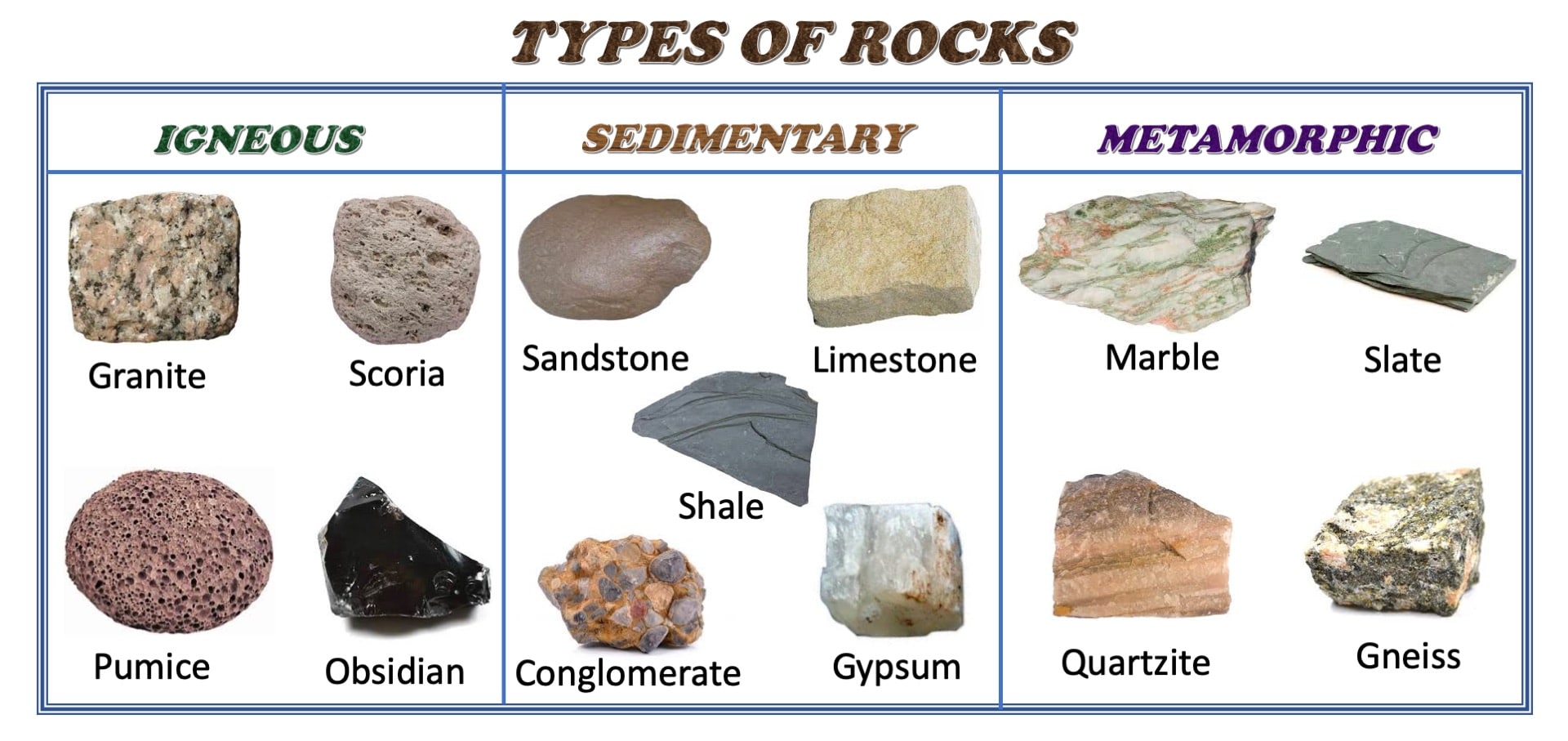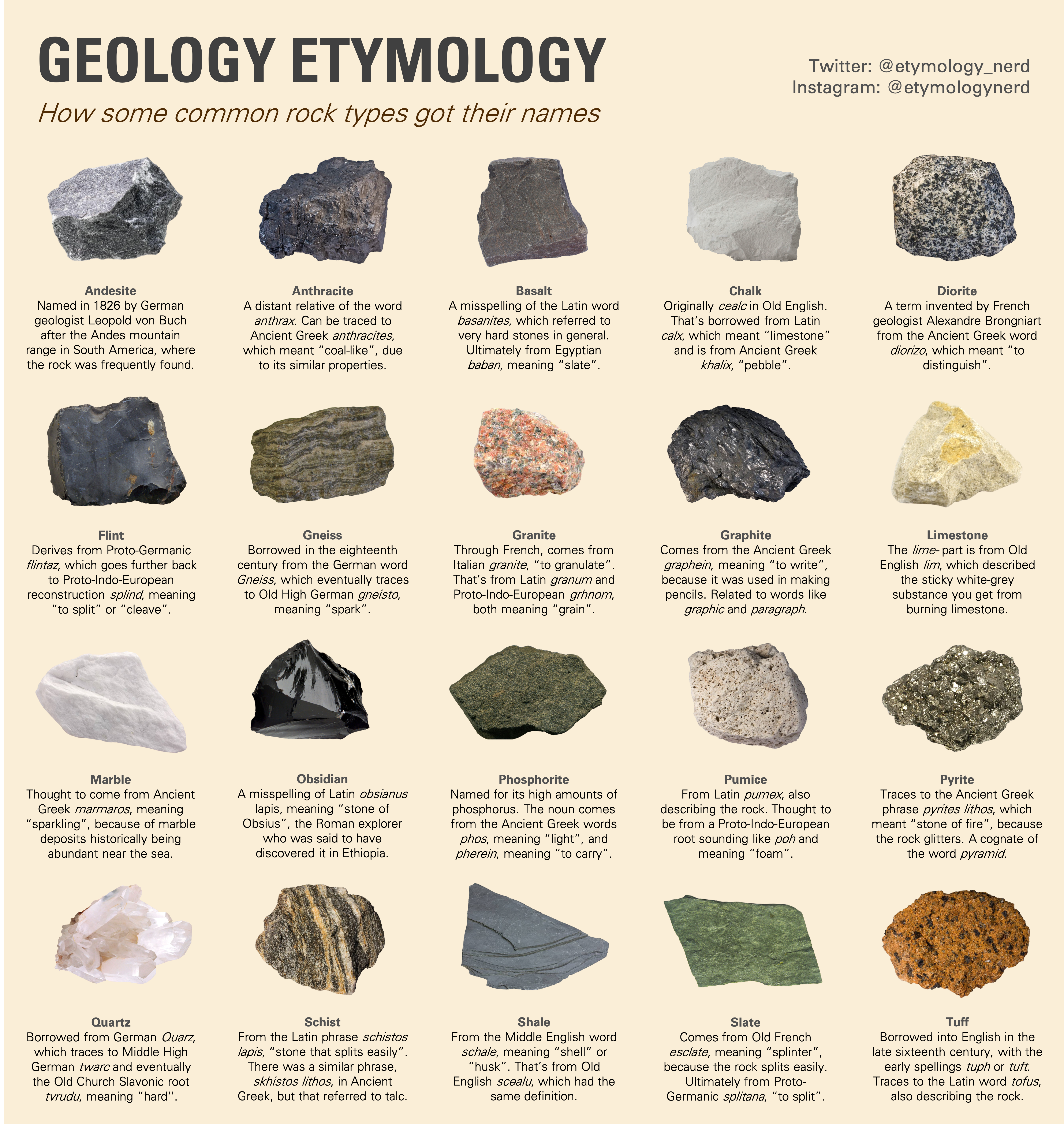Home > Sections > Earth > Types of Rock
Last Updated: 14th June 2023
ARCHIVED ITEM: this page is no longer updated.
Types of Rock
Keywords
Igneous, sedimentary, metamorphic, rock, formation, strata, minerals, extrusive, intrusive, layered, morphing.
Introduction
We live on a giant rock. It's true. The Earth is a giant ball of rock, which has formed over millions of years. But, there are different types of rocks, and different ways they have formed. How? Let's take a look.
The Three Main Types
There are three main different types of rock. These are:
- Igneous
- Sedimentary
- Metamorphic
In the middle of the Earth is the mantle and core. These are two superheated areas that are basically liquid. They are mainly made of iron and nickel, which are held together by magnetic forces.
When you have a magnet in your hand, this will usually be of an iron composite (it being a compound of several metals, but mainly iron), and will be ferrous, or magnetic. This is what is inside the mantle and core of the planet.
Here is a YouTube video from FreeSchool on the types of rock:
Interesting fact: the arrangement of atoms in a rock defines how hard the mineral is. Graphite and diamonds are made from the same element, carbon, but their hardness is different due to their internal structure.
Igenous Rocks
How are they formed? This one is simple. Let's say there's a volcano and it erupts. You'll see lava flow down from the source, and as it does, it [eventually] cools down and solidifies. But it is also when it moves about underground, near the core. When it gets far enough away, it will cool down and solidify there and form igneous rock formations.
Some examples of igneous rocks include:
- Andesite - often used for roadbeds, statues and monuments
- Diorite - often used as a decorative stone in worktop surfaces and outside of buildings
- Granite - used as flagstones in floors and some in jewellery
- Obsidian - used in jewellery, or to create weapons like spears or arrows
- Pumice - often used as a stone to wear off dead skin off your body!
Sedimentary Rocks
As the name sediment suggests, a rock made into a sedimentary type is one that is layered, from millennia of years. They also erode through the years, giving that layered look, but also the pressure from the topmost layers push down the bottommost layers to form the rock.
Some examples of sedimentary rock include:
- Sandstone - often used in construction, and for pavement kerbstone, as well as cement manufacturing
- Limestone - garden decorations, building stones, kerbstones
- Shale - can be used for pottery, making sculptures and also for a road aggregate
- Breccia - often used for landscaping, as a gemstone and for jewellery
- Coal - used to make steel, to make electricity, and also used to make dyes, plastic and fibres
- Flint - used in the stone age for axe heads, spears and arrow points
- Mudstone - used as a paving stone or for roof tiles
Sedimentary rocks also form stratas. Simply put, these are single layers of rock formations, consisting of one kind of material at a time. For instance, in sandstone formation, it will layer the sand in one level, and then a new layer will form on top of that, increasing the pressure as it forms over the thousands of years it takes to make it.
No, it's not the book by Terry Pratchett, although I recommend it to read, as it's the precursor to the Discworld series of books, but that's another story...
Metamorphic Rocks
We know that igneous rocks are extrusive, in that they cool down and form externally from the Earth, and sedimentary rocks form through layers of pressure over a long period of time. But what about metamorphic rock?
Well, it's a rock type that changes it form. That's why it's called morphic. It means that they would have originally been a different type of rock (igenous, sedimentary or even another metamorphic rock), and have changed it's properties. This is all done intrusively, which means it's done near the centre of the Earth, and not externally.
Some examples of metamorphic rock include:
- Soapstone - used for interior decoration, can be used as a supplement for Calcium or Magnesium
- Quartzite - used as a decorative countertop, arrowheads, production of glass, and the ballast you see alongside the rail lines
- Marble - often seen as a decorative countertop or floor tiles, but also used as a whiting material in toothpaste, paint and paper
- Slate - often seen as a decorative stone in gardens, used for tombstones, and is also used for blackboards and the bed material for pool and snooker tables
- Anthracite - used in medicines for manufacture of Aspirins, electricity generation, manufacture of soap, solvents and dyes
Here is a YouTube video from Jam Campus on the Rock Cycle:
Footnotes
[1]How rocks got their name. Image courtesy The Etymology Nerd.




 Crude Oil
Crude Oil Gravity
Gravity

